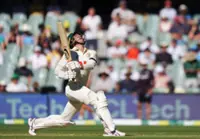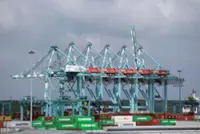When Musk opened Tesla’s factory in Austin, Texas, in April, he said the Cybertruck and Semi will be in production next year. — Getty Images/TNS
At some point, Elon Musk is going to blog again.
Four months have passed since the chief executive officer of Tesla tweeted he was working on a third "master plan” for the electric-car maker. Parts one and two were playful, endearing and hugely effective in burnishing Musk’s reputation as a visionary, ginning up excitement among investors and prospective hires. Who wouldn’t want to do good for the world by making a difference in global carbon emissions? Does ambition get any bigger than disrupting every major form of terrestrial transport?





